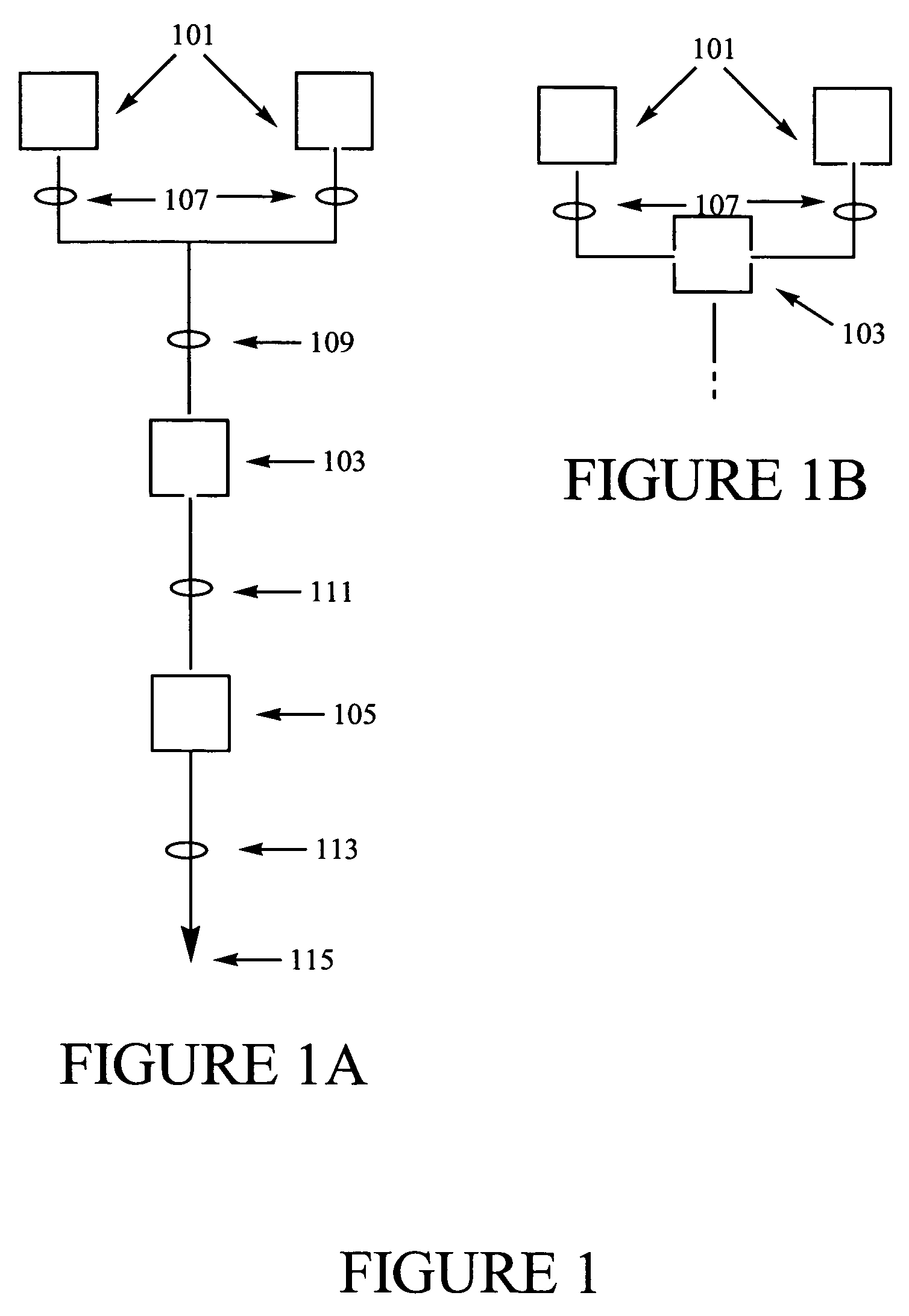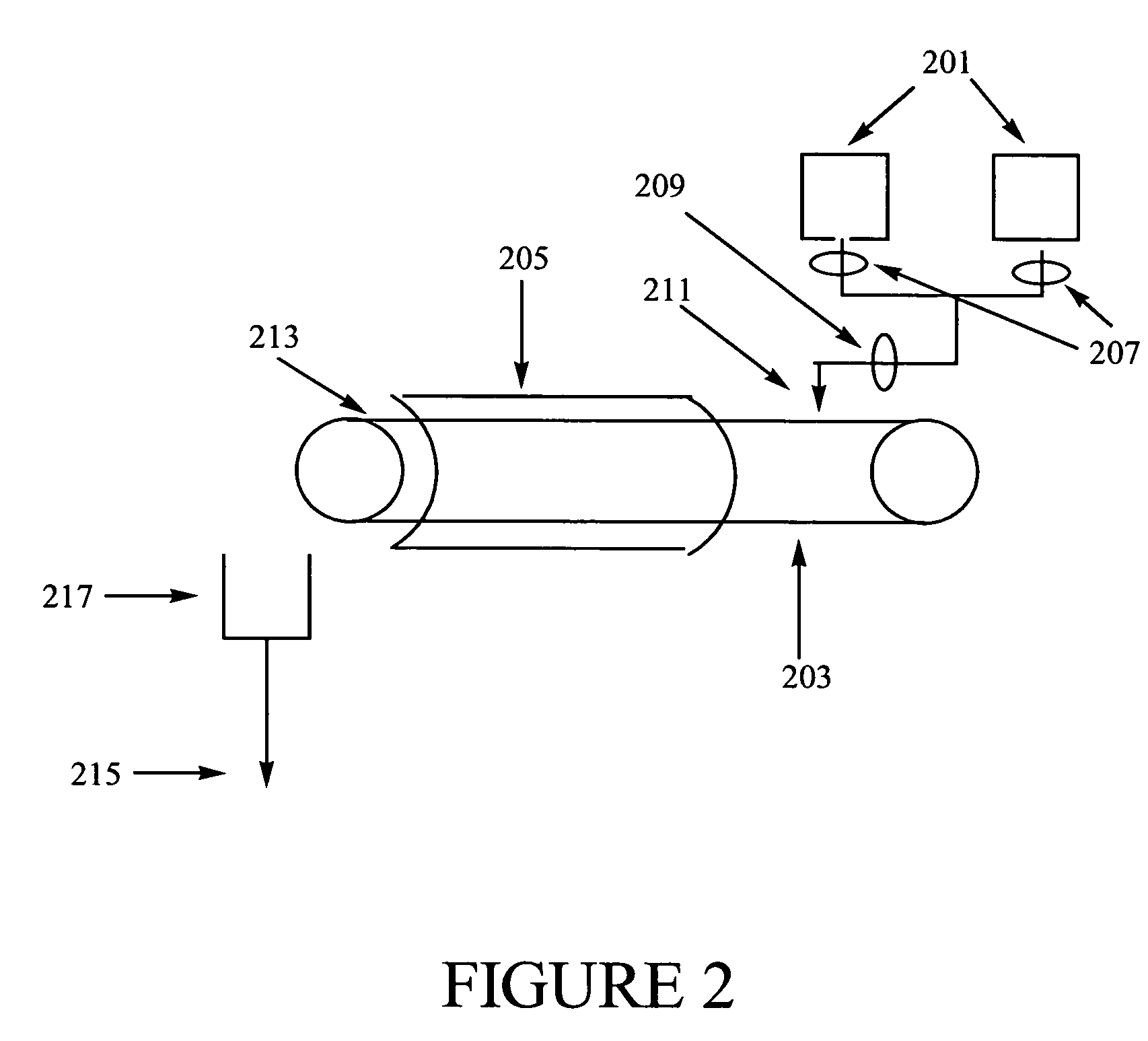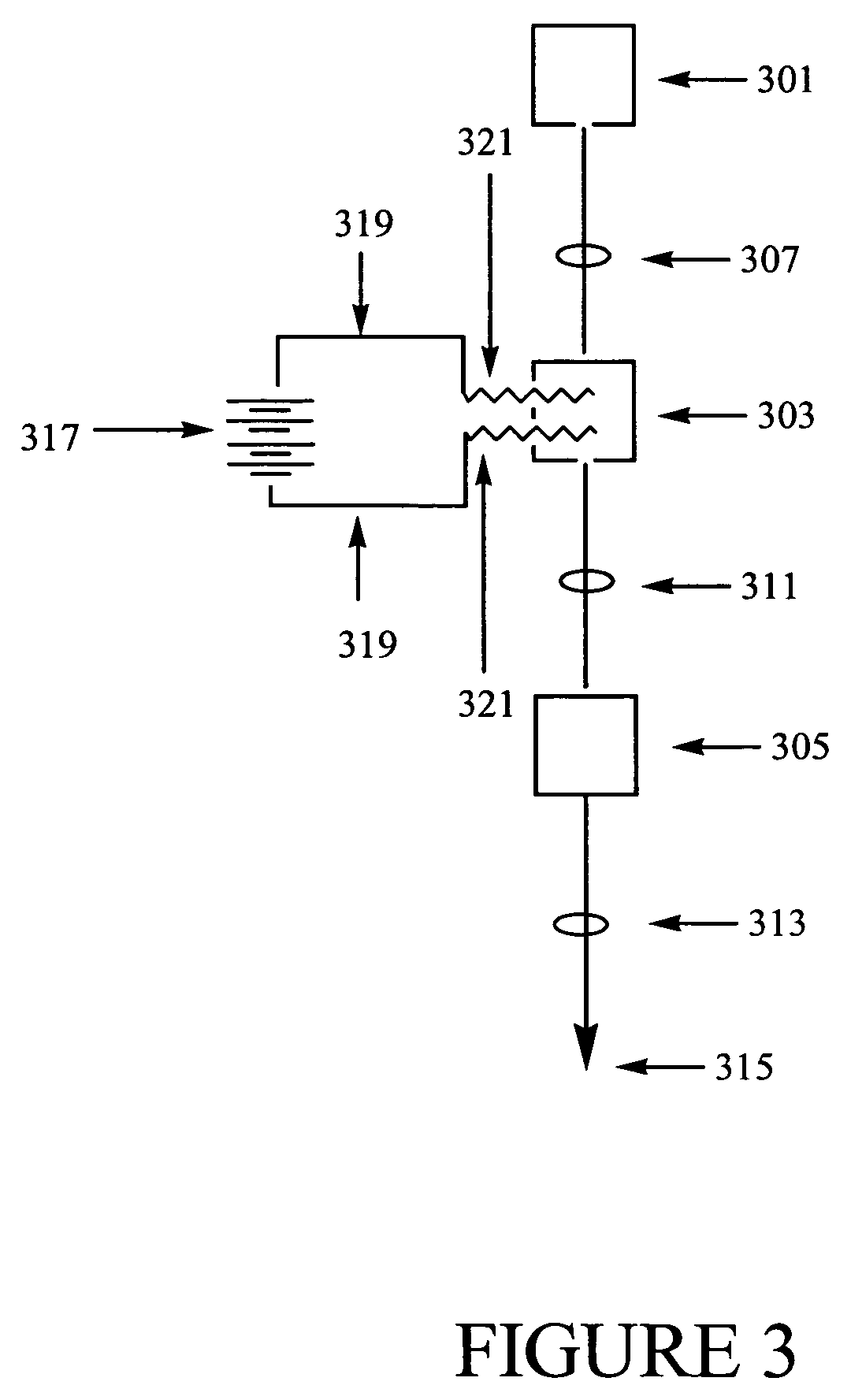Methods of synthesizing a ferrate oxidant and its use in ballast water
a technology of ferrate oxidant and ballast water, which is applied in the direction of water/sewage treatment by oxidation, separation process, water/treatment water by nature, etc., can solve the problems of increased production cost, difficulty in preparing ferrate, and implementation of ferra
- Summary
- Abstract
- Description
- Claims
- Application Information
AI Technical Summary
Benefits of technology
Problems solved by technology
Method used
Image
Examples
example 1
Preparation of Ferrate(VI)
[0408]The following is one representative embodiment of a laboratory procedure for synthesizing ferrate. Add 75 mL distilled water to a 250 mL beaker. Add 30 g of NaOH to result in a 10 M solution. Cool the caustic solution in an ice bath. Pump Cl2(g) (approximately 6.5 g) into the solution while mixing. Add a second batch (70 g) of NaOH to the hypochlorite solution. Keep the solution cool. Coarse filter the precipitated salt residue. Add 25 g of Fe(NO3)3.9H2O while stirring. Filter through medium coarse filter. Analyze the Fe6+ yield using UV-Vis spectroscopy by observing absorbance at about 510 nm.
example 2
Synthesis and Measurement of Ferrate
[0409]Ferrate is synthesized using the procedure of Example 1, except 16.35 g of chlorine was used instead of 6.5 g, and 25 g NaOH is used as the second caustic addition instead of 70 g. 40 g of coarse-glass-frit-filtered caustic / hypochlorite solution is added to a 50 mL jacketed reaction vessel containing a TEFLON®-coated magnetic stirring bar. Controlled temperature water is circulated through the jacket to control and establish the reaction temperature. 5.0 g of ferric nitrate nonahydrate (Fe(NO3)3.9H2O) is added over a period of a few minutes to begin the experiment.
Temperature is set at 30° C.
[0410]
Time,ActualExpectedObservedFraction of IronActual ReactionminWt*, (g)Absorbance†Absorbancein (VI) StateTemperature, ° C.Notes022.4Begin iron addition227Complete ironaddition2.5303.533.9Beginning ofreaction noted50.331.040.250.2431.1100.321.010.400.4030.7170.310.980.480.4930.4250.331.040.590.5730.4350.321.010.600.5930.3450.341.080.6950.6430.5*Actual...
example 3
Preparation of Ferrate(VI)
[0426]Ferrate is synthesized using the procedure of Example 1, except 13 g of chlorine was used instead of 6.5 g, and 25 g NaOH is used as the second caustic addition instead of 70 g. Reaction vessel is a jacketed beaker maintained at 35° C. Begin with 20 g of caustic / hypochlorite solution. Gradually add 1.6 g of ferric nitrate nonahydrate crystals. This is a 5 fold stoichiometric excess of hypochlorite over ferric(III). The maximum temperature achieved during this step was 39° C.
[0427]
ActualExpectedFraction ofActual reactionTime,weight,absorb-ActualIron in thetemperature, mingmanceabsorbance(VI) state° C.150.32331.360.860.6335.2300.34271.441.140.7935.2450.29841.261.100.8735.2600.32891.391.250.9035.2
[0428]This example shows that, compared with Example 2, the Fe(VI) yield is increased by using more excess hypochlorite and caustic solution relative to the Fe(III) content of the reaction mixture. In this example, the volume of pH 10 buffer solution used was 50...
PUM
| Property | Measurement | Unit |
|---|---|---|
| time | aaaaa | aaaaa |
| period of time | aaaaa | aaaaa |
| atomic numbers | aaaaa | aaaaa |
Abstract
Description
Claims
Application Information
 Login to View More
Login to View More - R&D
- Intellectual Property
- Life Sciences
- Materials
- Tech Scout
- Unparalleled Data Quality
- Higher Quality Content
- 60% Fewer Hallucinations
Browse by: Latest US Patents, China's latest patents, Technical Efficacy Thesaurus, Application Domain, Technology Topic, Popular Technical Reports.
© 2025 PatSnap. All rights reserved.Legal|Privacy policy|Modern Slavery Act Transparency Statement|Sitemap|About US| Contact US: help@patsnap.com



